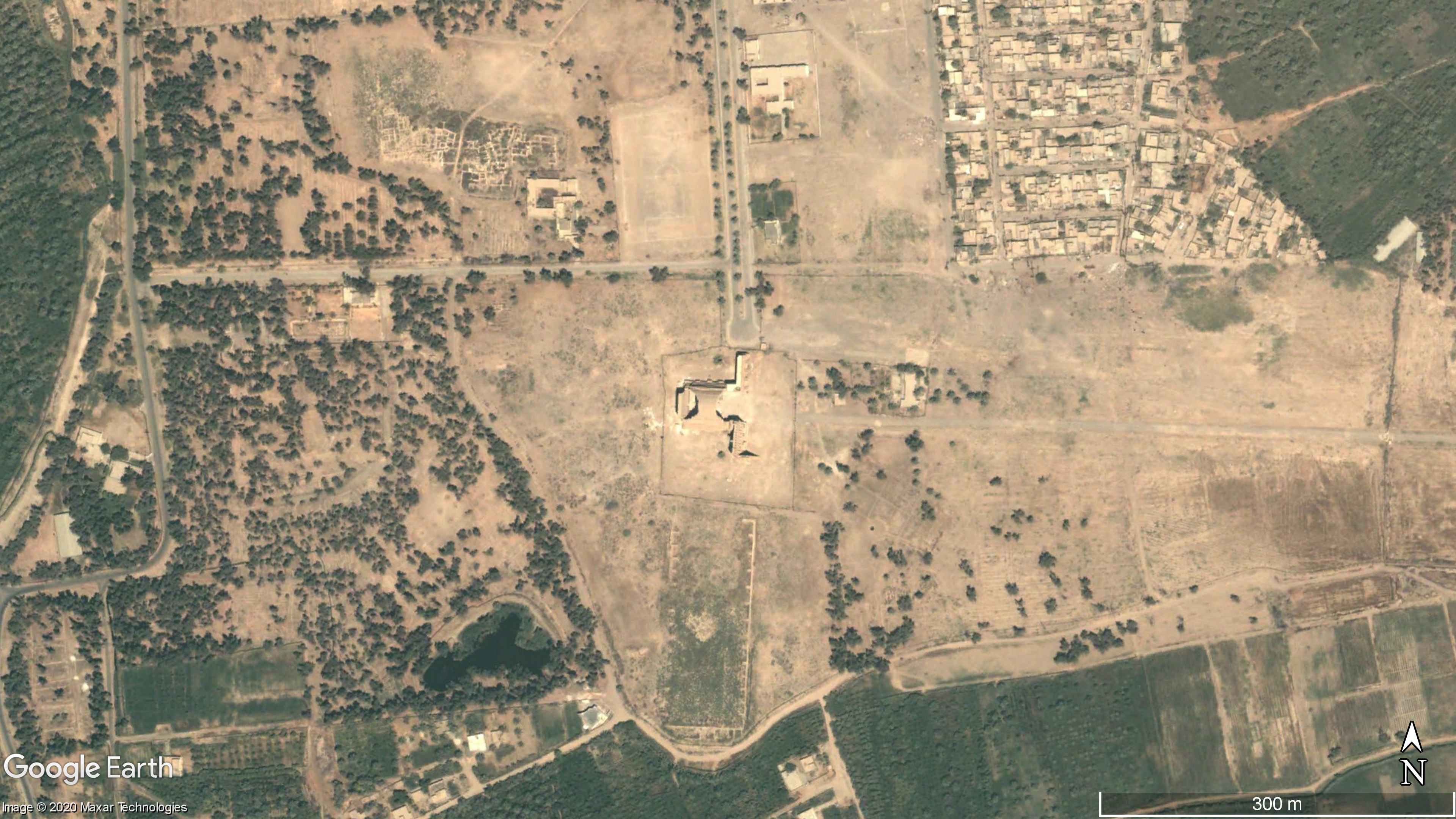Taq Kasra (Ctesiphon)
Taq Kasra (Taq-i Kisra), also known as the Arch of Ctesiphon, was a royal Persian residence during the Sasanian era. Today, this iconic pre-islamic monument is threatening to collapse.
The Taq Kasra Palace (which contains one of the largest single span brick-vaults in the world) is located within the former cities of Ctesiphon, Seleucia and Veh Ardashir, a dense urban area spanning both sides of the Tigris River. The wealth of the area was derived from its agriculturally productive hinterland – Mesopotamia - the bread basket of the Sasanian Empire.
The date of the construction of the Taq Kasra is still disputed, but it is likely to have been between the 3rd and 6th centuries CE. Much of the palace has been destroyed, but the giant brick arch, which was flanked on each side by brick façades, is still standing. The North Wing was destroyed by flooding in 1888, but reconstructed in the 1970s.
By 2002, when the satellite image below was acquired, several buildings have encroached into the vicinity of the Taq Kasra.

The broader urban area, known from late antiquity and consisting of several cities lying on both banks of the Tigris River, is difficult to discern from the dense palimpsest of modern settlement and field systems. The following series of images/time lapse video show/s the changes to the landscape between 1985 and 2020 in five-year intervals. Using the near infrared, red and green bands of multispectral Landsat satellite images healthy vegetation is represented as bright red, and clearly highlights irrigated agriculture. The growth of the modern settlement of Madain, is clearly visible. The polygon represents the still visible archaeological features in the immediate vicinity of the Taq Kasra (indicated by the white circle with black centre).
As part of the EAMENA-CPF (Cultural Protection Fund) training in endangered archaeology, employees of the State Board of Antiquities and Heritage assessed the condition of the site in March 2019. Documentation of its condition through satellite imagery, historical photographs, and continued monitoring through on-site condition assessments are crucial to preserving this spectacular site for future generations.
Special thanks to the Gertrude Bell Archive, Newcastle University.
